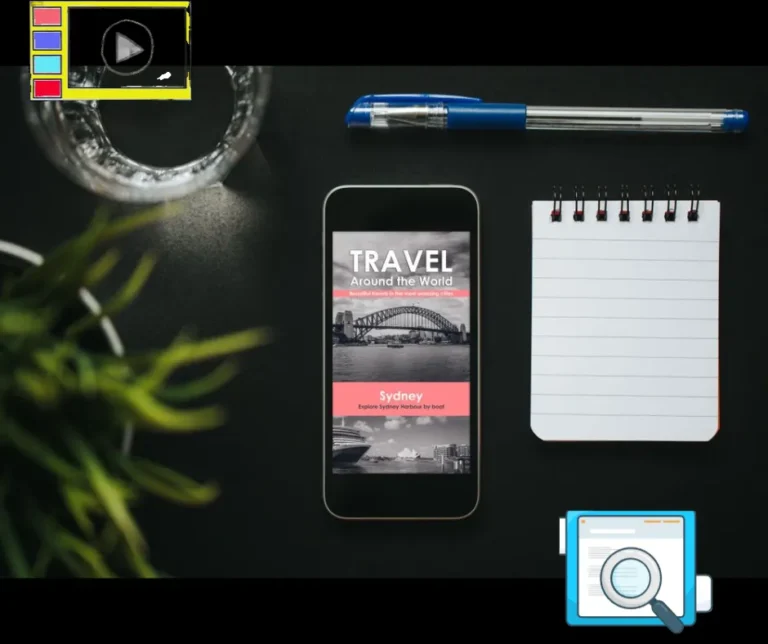Master Video Strategies to Maximize Conversions

In a world where attention spans are dwindling, one medium reigns supreme—video.
As consumers increasingly prefer visual content, harnessing the power of videos in sales strategies has transformed the landscape of digital marketing.
Understanding the intricacies of the sales funnel is crucial for any business aiming to thrive in today’s competitive environment.
Each stage, from awareness to decision-making, presents unique opportunities where video can effectively engage, inform, and convert potential customers.
This article explores innovative techniques for utilizing video-driven sales to maximize your conversion funnel, offering insights into various types of video content, optimization strategies, and the importance of aligning video with your overall marketing efforts.
Table of Contents Master Video Strategies to Maximize Conversions
The Importance of Video in Sales
Video content is now a key part of any successful marketing strategy.
It plays a vital role in attracting, nurturing, and converting leads in the sales funnel.
Engaging videos act as a powerful tool to draw the attention of potential customers.
This generates interest and leads them into the sales funnel.
Educational videos are excellent for building trust in your brand.
In fact, educating leads through video can increase the likelihood of purchase by 131%.
Here’s why videos are a winning strategy:
- High Conversion Rates: Landing pages with videos have an 86% conversion rate.
- Positive ROI: 87% of marketers see a positive return on investment from using videos.
Types of videos include:
- Explainer videos
- Customer testimonials
- Product videos
These video formats enhance the customer journey with social proof, improving the purchasing decision process.
A well-crafted video marketing strategy helps the sales team by moving satisfied customers smoothly from the awareness stage to happy, loyal customers.
Incorporating video content leads to greater customer satisfaction and boosts the overall conversion rates within marketing funnels.
Understanding the Sales Funnel
A sales funnel outlines the journey potential customers take before they make a purchase.
The funnel is divided into stages: awareness, consideration, and conversion.
Each stage plays a crucial role.
- Awareness Stage: This is where potential customers first learn about your product or service.
- Consideration Stage: Here, prospects compare your offerings with others.
- Conversion Stage: This is when a prospect decides to purchase.
Optimizing the conversion funnel involves improving each stage to boost conversion rates.
Awareness Stage
At the awareness stage, the goal is to attract potential customers with engaging content.
Explainer videos and brand stories work well here.
They provide a glimpse into your brand’s unique value.
Content that educates or entertains makes your audience want to share it on social media.
This broadens your reach and increases brand recognition.
The key is to engage viewers in a way that makes them curious to learn more about what you offer.
Consideration Stage
In the consideration stage, prospects evaluate their options.
Showcasing your product’s unique features is vital.
Use case studies and customer testimonials to build trust.
Engaging content like webinars and product demos help answer questions prospects might have.
Tailor these videos to highlight how your solution can address their needs.
This is the stage where you show why your product is the best choice.
Decision Stage
The decision stage focuses on encouraging potential customers to make a purchase.
Use product comparisons and FAQs to address any last-minute concerns.
Strong calls-to-action (CTAs) are crucial here.
Encourage viewers to sign up or buy.
Demo videos that highlight product features can boost confidence.
Testimonial videos featuring satisfied customers add credibility.
These videos empower consumers with the information they need to feel confident in their purchase decision.
Types of Video Content
Video content is a diverse and powerful tool in any marketing strategy.
It can engage potential customers, enhance conversion rates, and build brand trust.
Here’s a breakdown of the main types of video content you can use to maximize your sales funnel.
Explainer Videos
Explainer videos are short and engaging presentations that answer the question, “Who are you and what do you do?” These videos are particularly beneficial at the awareness stage of the sales funnel.
They simplify complex information into a simple format.
By introducing solutions to potential customers’ problems entertainingly, explainer videos help establish brand identity and expertise.
Given that 96% of people have watched these videos to learn more about a product or service, their role as an information resource is undeniable.
Testimonial Videos
Testimonial videos leverage positive feedback from satisfied customers to build trust.
They are vital in the sales process because they provide social proof.
Studies show that 2 out of 3 people are more likely to make a purchase after viewing a testimonial video.
These videos are memorable and shareable, combining emotion and logic to influence purchasing decisions.
They help prospects resonate with real user experiences, enhancing the chances of conversion.
Product Demonstration Videos
Product demonstration videos are crucial at the decision stage of the sales funnel.
They showcase your product’s features and benefits in action.
By meeting the individual needs of prospects, these videos enhance engagement and drive them toward a final purchase decision.
Sales teams can use known prospect information to tailor these demos effectively.
Incorporating them at critical points in the sales funnel can enhance understanding, retention, and ultimately, conversion rates.
Educational and How-to Videos
Educational videos help establish authority and keep customers engaged.
How-to videos serve as step-by-step guides that boost customer satisfaction.
They teach users how to solve problems or use your product effectively.
By creating and integrating such educational content into your marketing strategy, you not only retain customers but also turn them into brand advocates.
These videos help demonstrate new features and different use cases, ensuring audiences retain your message and potentially increase conversion rates.
Live Videos
Live videos offer real-time interaction, making them an effective tool for content marketing.
They educate clients about your products while showcasing expertise.
This real-time engagement builds trust and fosters audience interaction.
Quality production values, such as clear audio and visuals, boost brand perception.
Using live videos across marketing channels can significantly broaden your reach and engagement.
Furthermore, they can be repurposed into shorter clips for social media, maximizing visibility and utility across platforms.
Video Optimization Strategies
Video-driven sales are revolutionizing how businesses interact with potential customers.
To make the most of this powerful tool, companies must employ innovative techniques to boost their conversion funnel.
Start by analyzing metrics like view counts, engagement rates, and conversion rates.
Use video platform analytics to pinpoint strengths and weaknesses.
This helps businesses optimize video content effectively.
Fast-loading videos are crucial.
Ensure your videos play smoothly on different devices to offer a superior digital experience.
Consistent monitoring can track performance.
Personalize video content using viewer data to enhance the customer journey.
By catering to specific needs of target audiences, you can improve conversion rates.
A/B testing is beneficial.
Experiment with variations in video sales letters, landing pages, and calls to action.
This helps identify the most effective components to maximize conversion rates.
Enhancing Video Quality
A script that’s persuasive can enhance the quality of your video.
Focus on highlighting benefits, addressing objections, and telling a story.
Consider hiring professionals for animation, acting, or editing to ensure high production values.
Shareability is a must.
Host on a video platform for easy access.
Include detailed product demos and tutorials.
These engage viewers and help them understand your products better.
This can even reduce customer support inquiries.
Regularly monitor video performance.
Use data to make improvements, ensuring content resonates with your audience and meets quality standards.
SEO for Video Content
SEO-driven video content increases organic traffic significantly.
It enhances your brand’s visibility.
Concentrate on creating content around problem-solving keywords and related questions.
Include video transcripts and closed captions.
These improve accessibility and provide searchable text content, boosting SEO performance.
Metrics are vital.
Measure views, engagement, and click-through rates.
Use insights from these to refine your SEO strategies.
Tailor video formats and lengths for specific platforms.
This maximizes reach and engagement, key to successful video SEO.
Creating Engaging Thumbnails and Titles
Thumbnails are your first impression.
They should catch the eye to attract an audience.
This increases video views.
Ensure thumbnails accurately represent your content to set viewer expectations.
Integrate relevant keywords in titles to improve searchability.
They enhance visibility across platforms.
Use engaging captions and strong calls to action in promotions.
They drive viewer engagement and interest toward your video content.
Remember: Video transcripts and closed captions enhance accessibility and aid SEO.
They help boost your video’s discoverability, drawing in more interested viewers.
Using these techniques, your video-driven sales strategy can powerfully influence purchase decisions and customer satisfaction.
Leveraging Social Media for Video Distribution
Video marketing on social media can significantly boost your brand’s visibility.
By sharing videos on platforms like Facebook, Instagram, and TikTok, you reach more potential customers.
Paid ads on these sites work well, especially when spreading brand awareness.
Short video clips are ideal for social media posts, reels, and stories, as they increase sharing and engagement.
Interacting with viewers in the comments can create a sense of community and build loyalty.
Choosing the Right Platforms
Selecting the right platform for your video content is crucial.
Use YouTube for broad reach and StoryXpress for targeted engagement.
Tailor your videos to fit the format of each platform, such as vertical videos for TikTok and Instagram Stories.
Engage with viewers in the comments to build community support around your content.
Use tools like Google Analytics to track views and improve your strategy.
Video marketing automation tools can also enhance your campaign’s efficiency.
Scheduling and Timing of Video Posts
A video content calendar helps plan and schedule your releases for consistency.
By aligning video posts with audience behavior, you maximize engagement.
Track performance metrics to refine your strategy.
Using multiple channels, like social media and emails, expands your reach.
Be strategic with timing to prevent audience burnout.
Consider hosting effective onboarding videos on your website or platforms and schedule them based on user engagement.
Engaging with Your Audience
Videos are a powerful tool for engaging your audience.
They offer a personal connection to your brand.
Many people watch videos online each week, showing the importance of this medium.
Create content that answers common customer questions for a tailored support experience.
After purchase, send onboarding videos and tips to enhance customer satisfaction.
Use event videos to generate excitement and connect with your audience, encouraging their participation and loyalty.
Incorporating Calls-to-Action (CTAs)
Incorporating strong calls-to-action (CTAs) in your video content is essential for driving potential customers along the conversion funnel.
CTAs guide viewers to make purchasing decisions during the Decision and Action Stages.
Each video should include clear and engaging CTAs that encourage viewers to take the next step, like downloading a resource or signing up for a webinar.
Personalizing these CTAs based on different audience segments can further enhance engagement and conversion rates.
Videos not only entertain and inform but also offer strategic opportunities to guide viewers toward specific actions.
Crafting compelling narratives with integrated CTAs can significantly boost the effectiveness of your video sales funnel.
Crafting Compelling CTAs
Compelling CTAs direct viewers to take specific actions like signing up or buying products.
These are key for influencing purchasing decisions and can greatly enhance conversion rates.
To maximize their effect, CTAs should be strategically placed in videos that answer viewer questions and solve their problems.
Ideally, each stage of the video sales funnel should feature CTAs to continually engage prospects and drive them toward a final purchase.
By coupling engaging content with persuasive CTAs, marketing efforts become more effective, boosting conversions and sales.
Strategic Placement of CTAs in Videos
Strategically placing CTAs in your videos is crucial for aligning with each stage of the sales funnel.
During the awareness phase, CTAs should prompt actions like shares or sign-ups.
In the decision stage, they should focus on encouraging sales or trials.
Tools like Kartra can create in-video CTAs that enhance marketing capabilities and simplify the process.
It’s important to use action-oriented words to prompt immediate viewer engagement.
CTAs should be visible and stand out from the rest of the video this attract more attention.
Adding exit popups or scroll boxes with special offers can also encourage actions from viewers who don’t convert on their first visit, providing additional incentives.
Metrics to Measure Video Success
Understanding video success goes beyond counting how many people watched it.
To truly measure success, we need to look at different metrics that tell us about viewer engagement, conversion, and retention.
These metrics help businesses refine their video marketing strategy for better results.
Engagement Metrics
Engagement metrics are key to knowing how your audience interacts with your videos.
These include video views, watch time, likes, comments, and shares.
Video views tell you how many people you reach, while watch time shows if they’re staying engaged.
Comments and shares indicate how your content resonates with viewers.
Using tools like Google Analytics and YouTube Analytics can refine these metrics.
A/B testing different video types and calls to action helps discover what works best for your target audience.
Analyzing customer feedback and reviews also improves your video content strategy.
Conversion Metrics
Conversion metrics are essential to understand how videos influence potential customers to take action.
These could be visiting a website, signing up, or making a purchase.
High conversion rates mean better user journeys and, ultimately, higher revenue.
Key metrics include click-through rates (CTR) and conversion rates.
These show how effectively your videos lead viewers to specific actions.
Analyzing these metrics allows businesses to make informed, data-driven decisions.
This leads to better budgeting and resource allocation.
Retention Metrics
Retention metrics focus on keeping satisfied customers and making them loyal.
Customer retention is cheaper than acquiring new ones.
Retention videos can tell customer success stories, offer special deals, or give thank you messages, all helping to engage happy customers post-purchase.
To ensure these videos work, look at audience retention and engagement rates.
They show how well the content connects with viewers.
Successful strategies increase customer satisfaction and promote organic, word-of-mouth marketing.
This deepens customers’ connection to the brand and helps build a loyal customer base.
Integrating Video Across Marketing Channels
Video content serves as a powerful tool in any marketing strategy.
It captures the attention of potential customers, driving them into your sales funnel.
Ensuring a unified brand message and style helps solidify your brand identity.
Tracking key performance metrics allows you to evaluate funnel effectiveness and make improvements.
Videos can boost engagement by matching content to a buyer’s stage in their journey.
Personalized videos significantly increase the chances of moving prospects forward in their purchasing decision.
Consistency in Branding
Consistent branding is key to strengthening your brand’s identity in video content.
A uniform look and feel across videos builds recognition and loyalty among viewers.
It ensures potential customers receive a clear message about your brand’s values and offerings.
Consistent branding also boosts trust and credibility during the customer journey.
Incorporating these elements can enhance viewer engagement and make your marketing efforts more effective.
Multi-Channel Campaigns
Maintaining a cohesive brand message across platforms is crucial for video effectiveness.
Tracking performance metrics across each channel highlights successful strategies, allowing for better content distribution.
Video marketing, as part of your overall strategy, drives customer engagement and conversions.
With SEO-driven video content, organic traffic can increase by an average of 157%.
Personalizing videos at each sales funnel stage aligns your message with current customer needs, enhancing engagement and conversion rates.
Tables and lists can help visualize key concepts.
Here’s a brief checklist to ensure your video strategy is on point:
- Ensure consistent branding elements in all videos.
- Regularly track and analyze video performance metrics.
- Align video content with the buyer’s journey.
- Personalize content for targeted audience engagement.
- Optimize videos for SEO to boost online visibility.
By integrating video effectively across marketing channels, you engage potential customers and maximize your conversion rates.







